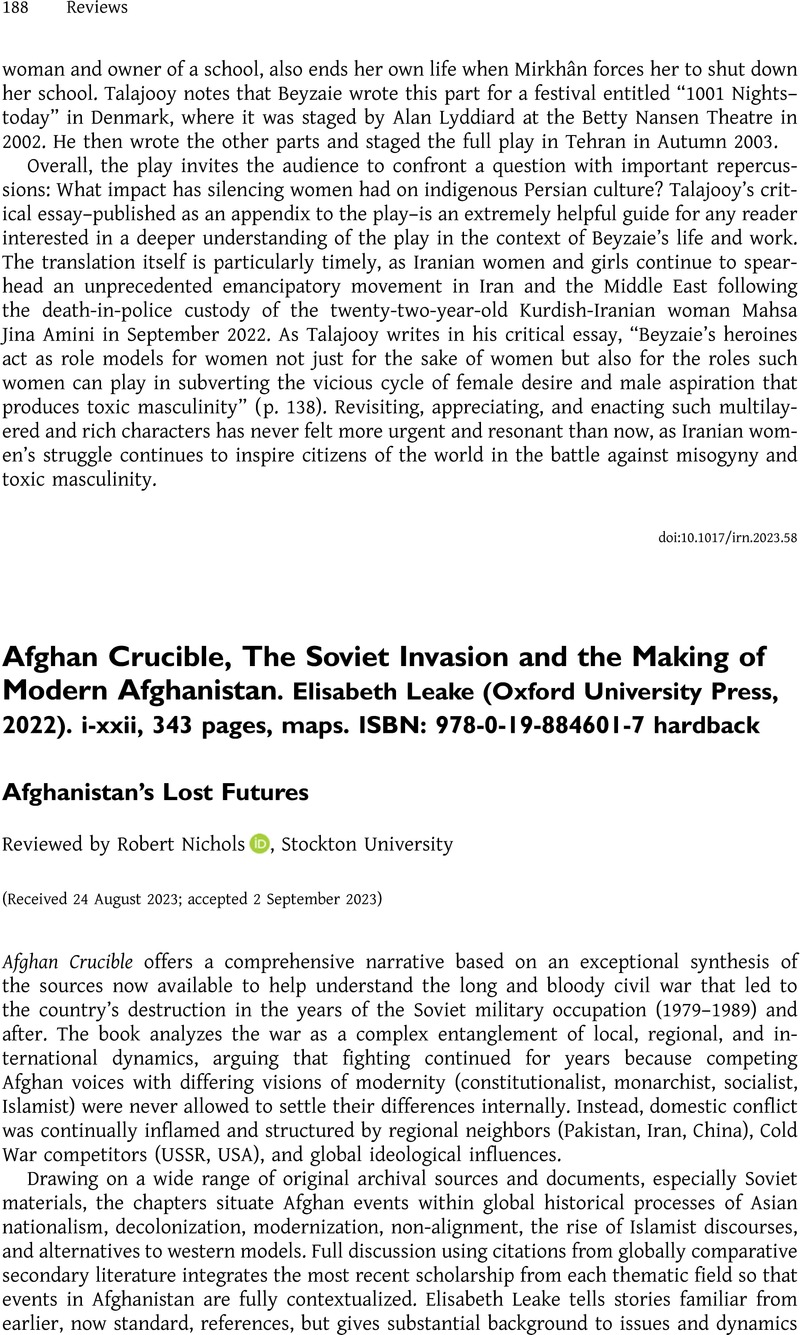No CrossRef data available.
Published online by Cambridge University Press: 02 October 2023

1 Such standard references include: Dupree, Louis, Afghanistan (Princeton: Princton University Press, 1973)Google Scholar; Rubin, Barnett, The Fragmentation of Afghanistan (New Haven: Yale University Press, 1995)Google Scholar; Barfield, Thomas, Afghanistan, A Cultural and Political History (Princeton: Princeton University, 2010)Google Scholar.
2 Examples of this moment include: Crews, Robert, Afghanistan Modern, The History of a Global Nation (Cambridge: Harvard University Press, 2015)Google Scholar; Nunan, Timothy, Humanitarian Invasion, Global Development in Cold War Afghanistan (Cambridge: Cambridge University Press, 2016)CrossRefGoogle Scholar.